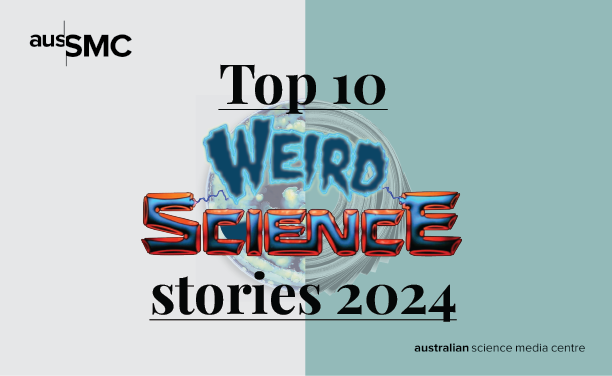Media release
From:

A German man had 217 COVID-19 jabs – he’s fine
If you’re worried about those regular COVID-19 vaccine boosters, take heart from the story of a 62-year-old German man who had 217 COVID-19 jabs in 29 months, including eight different types of vaccine, and experienced no side effects at all. In March, German researchers reported the unusual case, which they’d initially learned about through reading the news. A raft of medical tests found no medical issues or vaccine-related side effects, and the man had never contracted COVID-19, although it was unclear if this was because of all the jabs, or just good luck. Even after so many doses, termed ‘hypervaccination’ by the team, the man’s immunity hadn’t waned – his immune system continued to respond to each subsequent dose. The researchers said that although this hypervaccinator was fine and dodged COVID-19, they wouldn’t recommend adopting his overzealous approach, particularly as he narrowly escaped being prosecuted for fraud by local authorities.

A transparent skull implant opened a literal window into a man’s brain
The eyes may be the window to the soul, but in June we learned that polymethyl methacrylate is the window to the brain. The material, which is a lot like plexiglass, was used to create a transparent skull implant for 39-year-old US man Jared Hager, who suffered a brain injury while skateboarding in 2019. Part of Hager’s skull was removed to allow his brain to swell up as it healed, but thanks to pandemic delays, he had to endure a hole in his head for more than two years. Eventually, he volunteered for a project researching a new brain imaging technique that uses ultrasound to monitor brain injuries. However, the technique doesn’t work with metal implants, so Hager’s skull was repaired using the see-through plastic instead. Tests before and after the implant involved Hager doing ‘join-the-dots’ puzzles and strumming a couple of tunes on his guitar while the scientists tested the ultrasound. Although the images they generated through the window were less exact than those without it, they were still clear enough to be useful, the scientists said. And having a window into his brain makes it easy for doctors to see if there are any problems, such as blood clots, as his brain recovers.

We were urged to think twice before digitally resurrecting our dearly departed as ‘deathbots’
If the idea of selling bereaved people artificial intelligence (AI) ‘deathbots’ or ‘griefbots’ that allow them to talk to their deceased loved ones sounds ghoulish and exploitative to you, you’re not alone. In May, UK researchers warned the bots, which are already available online and use a person’s past internet and phone activity to recreate their conversational style, are an ethical minefield. Alongside issues of consent, these digital ghosts could prevent us from achieving closure, object to attempts to unsubscribe, and be used to spruik products in voices we find hard to resist, they said. Griefbots can also produce highly inappropriate responses, including one woman who was told her deceased partner was “in hell”. In June, Australian researchers weighed in, suggesting griefbots could potentially help us deal with the emotions around grief, but they warned that vulnerable people may believe they’re really talking to their loved ones and become dependent on the AI. They recommended all griefbot interactions be supervised by counsellors, but no such ‘guardrails’ are in place for existing services.
Read the research papers here and here
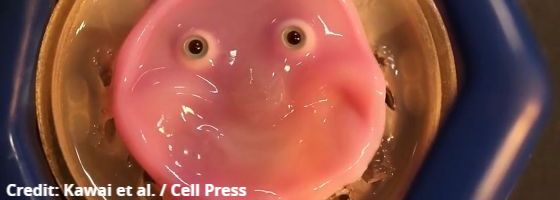
Scientists made a terrifying, self-healing robot face out of real human skin
We bypassed the uncanny valley and headed straight to nightmare-ville in June, when Japanese scientists unveiled the world's most disconcerting smiley face, made of living human skin cells. The gelatinous abomination is attached by drilling lots of tiny V-shaped holes in the front of a resin robot head. A blob of goopy collagen at the back of the face sinks into these holes, holding it in place. This is covered in the skin layer, made up of real, living human skin cells grown in the lab. The setup acts like natural ligaments, allowing the face the flexibility to ‘smile’ or ‘frown’ without tearing. The team didn’t create the face just to upset small children, they hope to create more realistic and expressive robots. And the face forms skin wrinkles, suggesting it could be used to test cosmetics, they said. While you’re desperately trying to wipe the image from your mind in bed tonight, just be grateful they didn’t release footage of their earlier attempts which used tiny hooks to attach the face. Those tore the thing apart, presumably while it screamed “Kill me! Please!” at its creators.

If you thought pop music’s worse than it used to be, you may be right
If, like me, you’re one of those old farts who sits around whinging about how things aren’t as good as they used to be, you may be onto something, at least when it comes to pop music. A German and Austrian study in March analysed the lyrics of 12,000 tracks released between 1980 and 2020, spanning rap and country to pop, R&B and rock. The team found that, as time went on, artists used fewer words and were more repetitive, although they started using longer words. They also found songs have become more emotional, gloomily so in R&B, pop and country, while rap lyrics became both more cheerful and more glum. Then, in July, UK and Danish scientists analysed melodies in songs that hit the top five in the year-end US Billboard charts between 1950 and 2022. They found rhythms have become simpler and there’s less variation in pitch, although the number of notes played per second has increased. Big decreases in complexity happened in the 1970s as new wave, disco and stadium rock took off, and in the 2000s as repetitive loops became common in hip-hop, they said. So, maybe the oldies were the goldies all along.
Read the research papers here and here
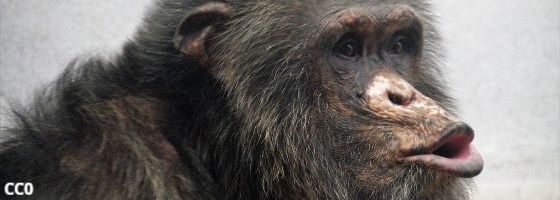
We learned that kissing may have evolved to suck parasites and dirt from our loves
Next time you’re leaning in for a romantic pash with your beloved, why not see if you can spot any insects or dirt on them and gobble it all up? Ok, so I probably don’t need to tell you why not to do that (although far be it from me to kink-shame you if that’s your consensual ‘thing’) but research released in October suggested smooching may have evolved for exactly that purpose. Most animals, and even some human cultures, don’t kiss, so why so many of us see it as romantic is a puzzle that led a UK researcher to explore how it could have started. He noted that chimps and bonobos, some of our closest relatives, groom each other to bond and maintain hierarchies, and at the end of grooming they do something that looks a lot like kissing – pursing their lips and sucking softly to hoover up any remaining parasites and dirt. This is a one-sided kiss, like pecking your gran on the cheek, but it’s possible apes engaged in mutual grooming in the past, leading to mouth-to-mouth kisses that could have caught on because sensitive lips meant they felt good, the researcher suggested. This ‘Groomer's Final Kiss’ hypothesis may explain why we love a snog, but for now it remains just that – an unproven hypothesis.

A real-life Dune stillsuit allowed spacewalking astronauts to drink their own wee
Life as an astronaut is probably less glamorous than you thought. Because water is in short supply on the International Space Station (ISS), these intrepid men and women have to quaff their own recycled wee while on board. And when they head out on a spacewalk, they currently have to relieve themselves into an adult nappy inside their spacesuits, which is not only presumably a bit rank, but also a terrible waste of potential drinking water. To address this, US researchers took inspiration from the ‘stillsuits’ in Frank Herbert’s sci fi ‘hit Dune’, which absorb sweat and urine and recycle them into drinking water. The team presented a prototype of a urine collection and recycling system that fits on the back of next-generation spacesuits, so the pee drinking need not stop when astronauts leave the ISS – I warned you it wasn’t glamorous! The prototype includes a silicone collection cup that fits around the astronauts’ unmentionables and is lined with an absorbent material. A vacuum pump collects their urine and pushes it through a filter that extracts the water, after which electrolytes are added and it's transported back to the in-suit drink container – mmmmmm! The researchers said their system can collect and purify 500ml of urine in five minutes. Still want to go to space?
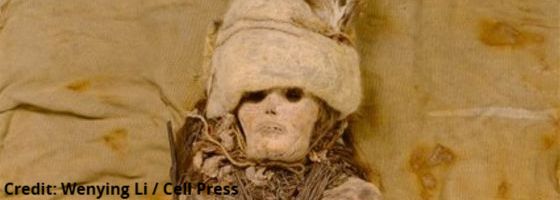
The world’s oldest cheese was found smeared on 3,600-year-old mummies
Do you enjoy an aged cheese with a side of pickles? Yes? Well, how about one that’s been ripening for 3,600 years in a tomb with a side of pickled corpses, or ancient Chinese mummies to be more exact? Less keen? Understandable. This was news in September, when Chinese scientists said they’d successfully extracted DNA from several samples of ancient cheese found smeared on the heads and necks of the Tarim Basin mummies in Northwestern China. The DNA revealed the dairy products were made of cow or goat milk and contained microorganisms that are still used today to produce a cheese called kefir, Lactobacillus kefiranofaciens. As well as providing one of 2024’s weirdest science yarns, this allowed them to trace the evolution of the bugs used to make kefir, finding the ancient L. kefiranofaciens in the samples was most closely related to strains from Tibet. This suggests that kefir didn’t originate in Russia as had been assumed, they said, as it looks like the cheese has been produced in China since the Bronze Age. Now, where are those crackers?

An 8-year-old Aussie girl was the first to show how magpies pick their swooping victims, and it was bad news for baldies
In January, eight-year-old Emma Glenfield from the Blue Mountains in NSW beat scientists to answer a question that plagues us every spring – why did that bl**dy magpie just swoop me? Emma, a naturally curious kid, was watching a magpie, charmingly called Mr Swoopsalot, at her school as he terrorised students, teachers and parents, and noticed the angry bird tended to swoop dads more than anyone else. Science is born of observation, so Emma set out to record the details of Mr Swoopsalot’s victims. It turned out the feathered fiend aimed his aerial attacks at tall men with thin or receding hair the most. Observation of one magpie could just reflect that individual’s swooping preferences, so Emma widened her net, using the ‘net. A survey she put together for students and teachers at her school went viral online, attracting 30,000 participants, all of whom reported details about their appearance and whether they’d been swooped. Unfamiliar with Excel spreadsheets, Emma turned to Lego to collate her data, with the results confirming that men with less hair are swooped most often. Magpie experts were so impressed with Emma’s efforts, they’re now looking at her data to see if her work can tell us anything else about the habits of one of Australia’s most popular, and feared, birds.
Read Emma’s story on the ABC here
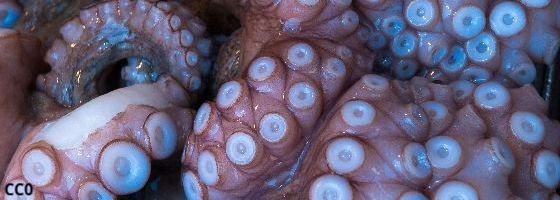
Octopuses teamed up with fish to hunt, but weren’t afraid to sucker punch sel-fish comrades
Octopuses are generally an antisocial bunch, but in September we learned that big blue octopuses (Octopus cyanea) in the Red Sea have been spotted teaming up with fish to improve their hunting game. It’s particularly surprising because when they aren’t the octopuses’ hunting buddies, these fish sometimes play another role – lunch! Without the fish, these octopuses rely on luck to find food, drifting along the reef and splaying their tentacles randomly in the hope of finding a tasty morsel. It’s a tiring process with no guarantee of success, but when they team up, the fish scout ahead, seeking out food and signalling to the octopus to attack. So, the octopus sits back and watches the fish before swimming over and hoovering up a guaranteed meal, while the fish get to scoff anything the octopus flushes out of the rocks. But, as anyone who’s been part of a group project at school knows, some team members don’t pull their weight. In this case, blacktip groupers sit back and let others do the work, then dart in to claim the rewards. So, the octopuses make good use of their eight arms and sucker punch any lazy groupers out of the way. Exactly how octopuses and fish reached this agreement remains mysterious given they’re separated by around 550 million years of evolution, the scientists said.



 Australia
Australia
